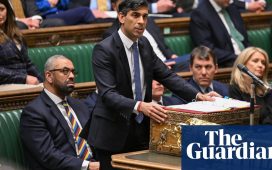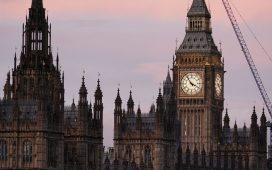As Labour’s general election defeats have mounted, it’s become common to fear that the party will never hold office again. There are reasons to think that this pessimism is overdone: the volatility of our electoral system, the government’s accumulating problems, and the ageing voters whom it increasingly relies on.
But another reason not to despair quite yet is rarely introduced into the panicky debate about Labour’s future. Away from Westminster, in regions such as northern England where its crisis is supposed to be deepest, the party is still in office in lots of places, in both traditional local government institutions and new ones created by devolution. And rather than just clinging on, in a small but growing number of these places Labour is doing innovative and popular things with what power it still has.
Some of these islands of radicalism are relatively well known, such as “the Preston model”, a Labour council’s revival of the once-struggling Lancashire city by getting its main institutions to spend a lot more of their money locally. Other ambitious Labour administrations such as Salford, North Ayrshire and the North of Tyne combined authority are also beginning to attract attention beyond their localities, by pursuing expansive policies such as opening more public libraries, building large numbers of council homes and investing in new green businesses.
Meanwhile, already high-profile but previously quite cautious Labour mayors such as Andy Burnham and Sadiq Khan have become bolder, particularly in their policies to reduce air pollution and improve public transport. Despite Labour’s sagging national popularity since 2017, in all these local strongholds its support has been resilient or even increased. Is this the beginning of something important – or just a few minor fightbacks by a declining party?
Sceptics about Labour’s prospects have plenty of reasons to think the latter. In centralised Britain, local government has been losing power and funding for decades, and particularly since 2010, as it has suffered the worst of Conservative austerity. And under Keir Starmer, Labour hasn’t been able – or willing – to use its local successes as evidence of its ability to run the country. A party that is damagingly short of national policies, and which recently launched a policy review to find some, appears largely uninterested in the promising experiments of its municipal wing. In statements by Starmer and his shadow ministers, the achievements of these innovators rarely feature.
This disconnect tells us important things about the state of the party, and also about our wider politics. Starmer’s vulnerable position as leader makes it risky for him to publicise the achievements of currently more effective local Labour politicians, such as the ambitious Burnham. Many of the party’s mayors and council leaders are also to the left of Starmer, or at least to the version of Starmer permitted by his centrist advisers. They are more interested in redistributing power and resources locally than in looking respectable for the Tory press, or trying to appease increasingly rightwing ex-Labour voters.
This boldness partly explains what happened to the many new ideas generated by the left during Jeremy Corbyn’s leadership. Some of that energy has either lingered in, or been transferred to, Britain’s town and city halls. Yet with Corbynism now increasingly treated by Labour as an aberration, its ideas – however successful they may be locally – appear to be largely off-limits to Starmer.
The municipal radicals seem undeterred. The leader of Preston council, Matthew Brown, and the mayor of Salford, Paul Dennett, have written occasional articles about what Labour nationally could learn from their work. But they also have a strong air of independence. In a recent book co-authored by Brown and the leftwing writer Rhian E Jones, Paint Your Town Red, which makes modern municipal socialism seem seductively achievable, there is a section titled “Solving problems from below without permission from above”. In some ways, these local leaders have seceded from mainstream politics, with its Westminster fixation. That may be their most radical step of all.
Yet they have also learned to exploit the Conservatives’ careless lawmaking. Brown and Jones argue that the new mayoralties and combined authorities, “cynically introduced” by the Tories since 2010 as an attempt to devolve the blame for austerity, have inadvertently “proved amenable” to leftwing politicians. The new structures have prompted them to form new regional alliances and to think afresh.
This picture of a kind of guerrilla government by the local left is very appealing in an era of Tory domination and general Labour toothlessness. But as a long-term strategy it may have limits. A similar but larger-scale leftwing experiment took place at the Greater London Council (GLC) between 1981 and 1986, during Margaret Thatcher’s premiership. The GLC had originally been created by the Tories to loosen Labour’s hold on the capital by extending London’s boundaries to include its more rightwing suburbs. Yet during the 80s a leftwing Labour administration led by Ken Livingstone took control, and found legislative loopholes that enabled it to increase and redirect the GLC’s spending in radical directions.
With little help from a cautious Labour leadership, rather like today’s, the GLC supported multiculturalism and minority rights in pioneering and eventually very influential ways. But its radicalism also so enraged and threatened the Conservatives that they abolished it. The current government is not yet suggesting that today’s leftwing mayoralties and councils be abolished. But days after Labour’s successes in this year’s mayoral elections, the Tories confirmed their plans to change the voting system for electing mayors, to the probable disadvantage of Labour candidates. Even more than Thatcher, this government is intolerant of rival centres of power.
For anyone wanting the city hall radicals to rescue Labour, there are also potential problems of scale. It’s relatively easy for bold politicians to win control locally in elections when turnouts tend to be low, and more politicised voters are influential. It’s also not that difficult to get a good press for shaking up a town from local newspapers that may welcome the excitement, and are often fairly neutral. But national politics, with its ferocious media bias towards Conservatism and fickle swing voters, is a different business.
Yet for Labour to recover nationally, and to remain usefully in power locally, closer cooperation between these two sides of the party may be one of the few viable strategies. Labour’s recent announcement that in government it “would ask public bodies to give more contracts to British businesses”, on the condition that those businesses improve their “social, environmental and labour” practices – both policies echoing parts of the Preston model – may be a sign that Starmer is finally beginning to pay attention to the municipal revolutions taking place under his nose. If not, the lives of those revolutions may be short and lonely.














